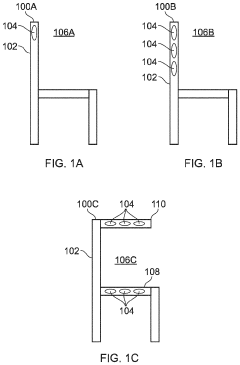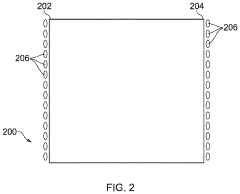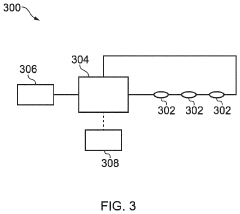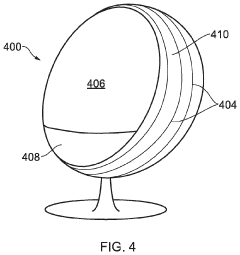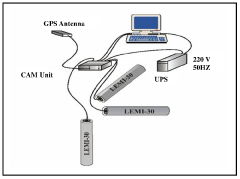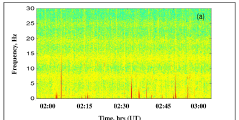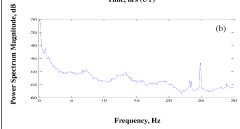Schumann Resonance and its Implications in Modern Research
JUN 24, 20259 MIN READ
Generate Your Research Report Instantly with AI Agent
Patsnap Eureka helps you evaluate technical feasibility & market potential.
Schumann Resonance Background and Research Objectives
Schumann resonance, first predicted by physicist Winfried Otto Schumann in 1952, refers to the global electromagnetic resonance phenomenon occurring in the Earth-ionosphere cavity. This natural phenomenon has been a subject of scientific interest for decades, with its implications extending across various fields of study.
The Earth's surface and the ionosphere form a concentric spherical cavity that acts as a waveguide for electromagnetic waves. Lightning discharges around the globe excite this cavity, resulting in resonant oscillations at extremely low frequencies (ELF). The fundamental Schumann resonance frequency is approximately 7.83 Hz, with harmonics occurring at higher frequencies.
Research on Schumann resonance has evolved significantly since its discovery. Initially, it was primarily studied in the context of atmospheric physics and global lightning activity. However, as our understanding of the phenomenon has grown, so too has the scope of its potential applications and implications in modern research.
The primary objectives of current Schumann resonance research are multifaceted. One key goal is to enhance our understanding of global climate dynamics. By monitoring changes in Schumann resonance parameters, researchers aim to gain insights into global temperature variations, atmospheric composition, and ionospheric conditions. This information can contribute to more accurate climate models and predictions.
Another important research objective is to explore the potential biological effects of Schumann resonance. Some studies suggest that this natural electromagnetic field may influence human physiology and cognitive function. Researchers are investigating whether exposure to Schumann resonance frequencies could have therapeutic applications or impact human health in previously unrecognized ways.
In the field of geophysics, Schumann resonance research aims to improve our ability to detect and predict seismic activity. Changes in the Earth's electromagnetic field, as reflected in Schumann resonance measurements, may serve as precursors to earthquakes, potentially enhancing early warning systems.
Additionally, Schumann resonance research has implications for space weather monitoring. By studying variations in the resonance parameters, scientists can gain insights into solar activity and its effects on the Earth's upper atmosphere. This knowledge is crucial for protecting satellite communications and power grids from solar-induced disturbances.
As technology advances, researchers are also exploring the use of Schumann resonance in novel applications. These include developing new methods for global positioning and navigation, as well as investigating its potential role in long-range communication systems that could operate independently of satellite technology.
The Earth's surface and the ionosphere form a concentric spherical cavity that acts as a waveguide for electromagnetic waves. Lightning discharges around the globe excite this cavity, resulting in resonant oscillations at extremely low frequencies (ELF). The fundamental Schumann resonance frequency is approximately 7.83 Hz, with harmonics occurring at higher frequencies.
Research on Schumann resonance has evolved significantly since its discovery. Initially, it was primarily studied in the context of atmospheric physics and global lightning activity. However, as our understanding of the phenomenon has grown, so too has the scope of its potential applications and implications in modern research.
The primary objectives of current Schumann resonance research are multifaceted. One key goal is to enhance our understanding of global climate dynamics. By monitoring changes in Schumann resonance parameters, researchers aim to gain insights into global temperature variations, atmospheric composition, and ionospheric conditions. This information can contribute to more accurate climate models and predictions.
Another important research objective is to explore the potential biological effects of Schumann resonance. Some studies suggest that this natural electromagnetic field may influence human physiology and cognitive function. Researchers are investigating whether exposure to Schumann resonance frequencies could have therapeutic applications or impact human health in previously unrecognized ways.
In the field of geophysics, Schumann resonance research aims to improve our ability to detect and predict seismic activity. Changes in the Earth's electromagnetic field, as reflected in Schumann resonance measurements, may serve as precursors to earthquakes, potentially enhancing early warning systems.
Additionally, Schumann resonance research has implications for space weather monitoring. By studying variations in the resonance parameters, scientists can gain insights into solar activity and its effects on the Earth's upper atmosphere. This knowledge is crucial for protecting satellite communications and power grids from solar-induced disturbances.
As technology advances, researchers are also exploring the use of Schumann resonance in novel applications. These include developing new methods for global positioning and navigation, as well as investigating its potential role in long-range communication systems that could operate independently of satellite technology.
Market Applications of Schumann Resonance Technology
Schumann Resonance technology has found diverse applications across various market sectors, leveraging its unique properties and potential benefits. In the field of health and wellness, Schumann Resonance generators have gained popularity as devices purported to improve sleep quality, reduce stress, and enhance overall well-being. These products often take the form of portable devices or home appliances that emit electromagnetic frequencies matching the Earth's natural resonance.
The environmental monitoring sector has also shown interest in Schumann Resonance technology. Researchers and organizations use specialized equipment to measure and analyze Schumann Resonance signals as potential indicators of global climate changes and electromagnetic disturbances. This application has led to the development of advanced sensors and data processing systems tailored for Schumann Resonance detection and analysis.
In the realm of telecommunications, Schumann Resonance principles have been explored for potential use in long-range, low-frequency communication systems. While not yet widely implemented, this technology could offer advantages in scenarios where traditional communication methods face limitations, such as underwater or underground environments.
The aerospace industry has shown interest in Schumann Resonance technology for its potential applications in spacecraft and satellite systems. Research suggests that mimicking the Earth's natural electromagnetic environment could help mitigate the negative effects of space travel on human physiology, potentially leading to the development of specialized equipment for long-duration space missions.
Schumann Resonance concepts have also found their way into the alternative energy sector. Some researchers are exploring the possibility of harnessing energy from the Earth's electromagnetic field, inspired by Schumann Resonance principles. While still largely theoretical, this application could potentially lead to novel energy harvesting technologies in the future.
In the field of agriculture, some studies have investigated the effects of Schumann Resonance-like electromagnetic fields on plant growth and crop yields. This has led to the development of experimental agricultural systems that incorporate controlled electromagnetic environments, aiming to optimize plant growth conditions.
The security and defense sector has shown interest in Schumann Resonance technology for its potential applications in long-range detection and communication systems. Research in this area focuses on developing sensors capable of detecting minute changes in the Earth's electromagnetic field, which could have implications for early warning systems and covert communication methods.
The environmental monitoring sector has also shown interest in Schumann Resonance technology. Researchers and organizations use specialized equipment to measure and analyze Schumann Resonance signals as potential indicators of global climate changes and electromagnetic disturbances. This application has led to the development of advanced sensors and data processing systems tailored for Schumann Resonance detection and analysis.
In the realm of telecommunications, Schumann Resonance principles have been explored for potential use in long-range, low-frequency communication systems. While not yet widely implemented, this technology could offer advantages in scenarios where traditional communication methods face limitations, such as underwater or underground environments.
The aerospace industry has shown interest in Schumann Resonance technology for its potential applications in spacecraft and satellite systems. Research suggests that mimicking the Earth's natural electromagnetic environment could help mitigate the negative effects of space travel on human physiology, potentially leading to the development of specialized equipment for long-duration space missions.
Schumann Resonance concepts have also found their way into the alternative energy sector. Some researchers are exploring the possibility of harnessing energy from the Earth's electromagnetic field, inspired by Schumann Resonance principles. While still largely theoretical, this application could potentially lead to novel energy harvesting technologies in the future.
In the field of agriculture, some studies have investigated the effects of Schumann Resonance-like electromagnetic fields on plant growth and crop yields. This has led to the development of experimental agricultural systems that incorporate controlled electromagnetic environments, aiming to optimize plant growth conditions.
The security and defense sector has shown interest in Schumann Resonance technology for its potential applications in long-range detection and communication systems. Research in this area focuses on developing sensors capable of detecting minute changes in the Earth's electromagnetic field, which could have implications for early warning systems and covert communication methods.
Current State and Challenges in Schumann Resonance Research
Schumann resonance research has made significant strides in recent years, with advancements in measurement techniques and data analysis. The current state of research is characterized by a growing understanding of the complex interactions between the Earth's ionosphere, magnetosphere, and various atmospheric phenomena. Scientists have developed more sensitive instruments capable of detecting subtle changes in the resonance frequencies, allowing for more accurate measurements and analysis.
One of the primary challenges in Schumann resonance research is the isolation of the signal from background noise. The extremely low frequency of these resonances makes them susceptible to interference from various sources, including human-made electromagnetic emissions and natural phenomena such as lightning storms. Researchers are continually working on improving signal processing techniques to enhance the signal-to-noise ratio and extract meaningful data from the measurements.
Another significant challenge is the interpretation of observed variations in Schumann resonance parameters. While changes in these parameters have been linked to various geophysical and atmospheric phenomena, establishing clear causal relationships remains difficult. Researchers are grappling with the complex interplay of factors that influence Schumann resonances, including solar activity, ionospheric conditions, and global lightning activity.
The global distribution of Schumann resonance monitoring stations presents both opportunities and challenges. While a network of stations allows for comprehensive global coverage, maintaining consistency in measurement techniques and data quality across different locations can be challenging. Efforts are underway to standardize measurement protocols and establish a more cohesive global monitoring network.
Recent research has also focused on exploring potential applications of Schumann resonance measurements. These include using the resonances as a proxy for global temperature changes, monitoring ionospheric disturbances, and even investigating potential links to human health and biological rhythms. However, translating these potential applications into practical tools and validated methodologies remains a significant challenge.
Advancements in computational power and modeling techniques have enabled more sophisticated simulations of Schumann resonances. These models are helping researchers better understand the complex dynamics of the Earth-ionosphere cavity and predict resonance behavior under various conditions. However, reconciling model predictions with observational data remains an ongoing challenge, highlighting the need for further refinement of both theoretical models and measurement techniques.
In conclusion, while Schumann resonance research has made substantial progress, it continues to face challenges in signal detection, data interpretation, and practical application. Overcoming these obstacles will require continued interdisciplinary collaboration and technological innovation in the field.
One of the primary challenges in Schumann resonance research is the isolation of the signal from background noise. The extremely low frequency of these resonances makes them susceptible to interference from various sources, including human-made electromagnetic emissions and natural phenomena such as lightning storms. Researchers are continually working on improving signal processing techniques to enhance the signal-to-noise ratio and extract meaningful data from the measurements.
Another significant challenge is the interpretation of observed variations in Schumann resonance parameters. While changes in these parameters have been linked to various geophysical and atmospheric phenomena, establishing clear causal relationships remains difficult. Researchers are grappling with the complex interplay of factors that influence Schumann resonances, including solar activity, ionospheric conditions, and global lightning activity.
The global distribution of Schumann resonance monitoring stations presents both opportunities and challenges. While a network of stations allows for comprehensive global coverage, maintaining consistency in measurement techniques and data quality across different locations can be challenging. Efforts are underway to standardize measurement protocols and establish a more cohesive global monitoring network.
Recent research has also focused on exploring potential applications of Schumann resonance measurements. These include using the resonances as a proxy for global temperature changes, monitoring ionospheric disturbances, and even investigating potential links to human health and biological rhythms. However, translating these potential applications into practical tools and validated methodologies remains a significant challenge.
Advancements in computational power and modeling techniques have enabled more sophisticated simulations of Schumann resonances. These models are helping researchers better understand the complex dynamics of the Earth-ionosphere cavity and predict resonance behavior under various conditions. However, reconciling model predictions with observational data remains an ongoing challenge, highlighting the need for further refinement of both theoretical models and measurement techniques.
In conclusion, while Schumann resonance research has made substantial progress, it continues to face challenges in signal detection, data interpretation, and practical application. Overcoming these obstacles will require continued interdisciplinary collaboration and technological innovation in the field.
Existing Methodologies for Schumann Resonance Detection
01 Schumann resonance devices for health and wellness
Various devices are designed to generate or utilize Schumann resonance frequencies for potential health benefits. These devices aim to simulate the natural electromagnetic frequencies of the Earth to promote relaxation, improve sleep quality, and enhance overall well-being. Some implementations include wearable devices, room-based generators, and portable units that emit Schumann resonance frequencies.- Schumann resonance-based therapeutic devices: Various therapeutic devices have been developed that utilize Schumann resonance frequencies for health and wellness purposes. These devices aim to simulate the natural electromagnetic frequencies of the Earth to promote relaxation, improve sleep quality, and enhance overall well-being. Some designs incorporate wearable technology or portable units that can generate Schumann resonance frequencies for personal use.
- Environmental monitoring and analysis systems: Systems and methods have been developed for monitoring and analyzing Schumann resonance in the environment. These technologies can be used for various applications, including weather prediction, earthquake forecasting, and studying the Earth's electromagnetic field. Some designs incorporate sensors and data processing algorithms to detect and analyze Schumann resonance signals.
- Schumann resonance generators for agricultural applications: Schumann resonance generators have been designed for use in agriculture to potentially improve crop growth and yield. These devices aim to create an electromagnetic environment similar to the Earth's natural frequencies, which may have beneficial effects on plant development and soil health. Some designs include portable or stationary units that can be deployed in fields or greenhouses.
- Integration of Schumann resonance in wellness products: Various wellness products have been developed that incorporate Schumann resonance technology. These may include furniture, bedding, or personal accessories designed to expose users to Schumann resonance frequencies. The goal is to create a harmonious electromagnetic environment that may contribute to improved relaxation, stress reduction, and overall well-being.
- Schumann resonance-based water treatment systems: Water treatment systems have been developed that utilize Schumann resonance frequencies to potentially improve water quality. These systems aim to alter the molecular structure or properties of water using electromagnetic frequencies similar to the Earth's natural resonance. The treated water may have applications in agriculture, industrial processes, or personal consumption.
02 Schumann resonance in environmental monitoring and prediction
Schumann resonance measurements are used in environmental monitoring systems to detect and analyze atmospheric phenomena. These systems can potentially predict natural disasters, monitor climate changes, and provide early warning for severe weather events. The technology involves sensors and data processing algorithms to interpret Schumann resonance signals and their variations.Expand Specific Solutions03 Integration of Schumann resonance in meditation and relaxation tools
Schumann resonance frequencies are incorporated into meditation and relaxation tools to enhance the user experience. These tools may include audio devices, virtual reality systems, or specialized meditation spaces that generate or simulate Schumann resonance frequencies. The aim is to create an environment that promotes deeper relaxation and potentially facilitates meditative states.Expand Specific Solutions04 Schumann resonance in agricultural applications
Research explores the potential benefits of Schumann resonance in agriculture. This includes devices and methods that apply Schumann resonance frequencies to plants, seeds, or soil to potentially enhance growth, improve crop yield, or increase resistance to pests and diseases. The technology may involve specialized emitters or treatment chambers for agricultural use.Expand Specific Solutions05 Schumann resonance in energy harvesting and wireless power transmission
Innovative approaches explore the use of Schumann resonance for energy harvesting and wireless power transmission. These technologies aim to capture the natural electromagnetic energy present in the Earth's Schumann resonance field and convert it into usable electrical power. Applications may include powering remote sensors, IoT devices, or supplementing renewable energy systems.Expand Specific Solutions
Key Players in Schumann Resonance Research and Applications
The research on Schumann Resonance is in a mature stage, with ongoing exploration of its implications in various fields. The market size for related applications is growing, particularly in areas such as environmental monitoring and health sciences. Technologically, the field is moderately mature, with established players like Yeda Research & Development Co. Ltd., Max Planck Gesellschaft, and The Regents of the University of California leading research efforts. Companies such as Intel Corp. and Koninklijke Philips NV are exploring potential commercial applications. Universities like Zhejiang University and Duke University are contributing to academic advancements. The involvement of diverse institutions, from research organizations to tech companies, indicates a competitive landscape with opportunities for both fundamental research and practical applications.
Max Planck Gesellschaft zur Förderung der Wissenschaften eV
Technical Solution: Max Planck Society has been at the forefront of Schumann Resonance research, utilizing advanced magnetometers and signal processing techniques to study these low-frequency electromagnetic oscillations. Their approach involves long-term monitoring of Schumann Resonances using a global network of observation stations, allowing for comprehensive data collection and analysis. They have developed sophisticated algorithms to extract Schumann Resonance parameters from noisy electromagnetic data, enabling the study of subtle variations in these resonances and their potential correlations with various geophysical and atmospheric phenomena.
Strengths: Extensive global monitoring network, advanced signal processing techniques, and long-term data collection. Weaknesses: High cost of maintaining a global network, potential for data inconsistencies across different stations.
The Regents of the University of California
Technical Solution: The University of California system has been involved in Schumann Resonance research through various departments and campuses. Their approach combines theoretical modeling with experimental observations. They have developed advanced computational models to simulate the behavior of Schumann Resonances under different atmospheric conditions. Additionally, they have established monitoring stations that use sensitive magnetometers and electric field sensors to detect these resonances. Their research also explores the potential applications of Schumann Resonances in areas such as climate change monitoring, earthquake prediction, and human health effects.
Strengths: Interdisciplinary approach combining theory and experiment, access to diverse research facilities across multiple campuses. Weaknesses: Potential for fragmented research efforts across different campuses, challenges in coordinating large-scale, long-term studies.
Core Innovations in Schumann Resonance Measurement
A magnetic field exposure system and uses thereof
PatentPendingUS20230372726A1
Innovation
- A magnetic field exposure system generating an amplitude-modulated low frequency magnetic field with a carrier frequency of 360 to 450 Hz and a modulation frequency of 0.5 to 100 Hz, providing a field strength of 0.5 to 250 μT, specifically designed to enhance cell survival, proliferation, reduce stress, and promote tissue regeneration.
Noval strategy of schumann resonance phenomena at a low latitude stationand their estabilishment thereof
PatentInactiveIN202011054143A
Innovation
- The use of three-component search coil magnetometers (LEMI-30) installed at low latitude stations to measure magnetic field variations, combined with GPS synchronization and data analysis using MATLAB, to record and analyze Schumann resonance phenomena, allowing for the isolation of Schumann signals and correlation with ground surface temperature for environmental monitoring.
Environmental Factors Affecting Schumann Resonance
The Schumann resonance, a set of spectrum peaks in the extremely low frequency (ELF) portion of the Earth's electromagnetic field spectrum, is influenced by various environmental factors. These factors play a crucial role in modulating the resonance's characteristics and have significant implications for modern research.
One of the primary environmental factors affecting Schumann resonance is solar activity. Solar flares and coronal mass ejections can cause disturbances in the Earth's ionosphere, leading to variations in the resonance frequency and amplitude. During periods of high solar activity, the ionosphere becomes more ionized, altering its conductivity and height, which in turn affects the propagation of electromagnetic waves within the Earth-ionosphere cavity.
Seasonal and diurnal variations also impact Schumann resonance. The intensity of the resonance tends to be higher during local summer months due to increased lightning activity, which is a primary source of excitation for the resonance. Daily fluctuations are observed as well, with peak intensities typically occurring during local afternoon hours when thunderstorm activity is at its highest.
Geomagnetic storms, caused by interactions between the Earth's magnetosphere and solar wind, can significantly disrupt Schumann resonance. These storms can alter the ionospheric conditions, leading to changes in the resonance frequency and amplitude. In some cases, geomagnetic storms may even cause temporary disappearances of the resonance signal.
Global temperature changes and climate patterns also influence Schumann resonance. As global temperatures rise, there is an observed increase in the frequency and intensity of thunderstorms worldwide. This increased lightning activity directly affects the excitation of the Earth-ionosphere cavity, potentially leading to long-term changes in Schumann resonance characteristics.
Human activities, particularly those involving large-scale electromagnetic emissions, can interfere with Schumann resonance measurements. Power grids, radio transmissions, and other anthropogenic sources of electromagnetic radiation can create noise that masks or distorts the natural resonance signal, making accurate measurements challenging in urbanized areas.
Geological events, such as earthquakes and volcanic eruptions, may also impact Schumann resonance. These events can cause localized changes in the Earth's electromagnetic field and potentially affect the propagation of ELF waves within the Earth-ionosphere cavity.
Understanding these environmental factors and their effects on Schumann resonance is crucial for interpreting measurement data and applying this knowledge in various fields of research, including atmospheric science, geophysics, and potentially even in the development of early warning systems for natural disasters.
One of the primary environmental factors affecting Schumann resonance is solar activity. Solar flares and coronal mass ejections can cause disturbances in the Earth's ionosphere, leading to variations in the resonance frequency and amplitude. During periods of high solar activity, the ionosphere becomes more ionized, altering its conductivity and height, which in turn affects the propagation of electromagnetic waves within the Earth-ionosphere cavity.
Seasonal and diurnal variations also impact Schumann resonance. The intensity of the resonance tends to be higher during local summer months due to increased lightning activity, which is a primary source of excitation for the resonance. Daily fluctuations are observed as well, with peak intensities typically occurring during local afternoon hours when thunderstorm activity is at its highest.
Geomagnetic storms, caused by interactions between the Earth's magnetosphere and solar wind, can significantly disrupt Schumann resonance. These storms can alter the ionospheric conditions, leading to changes in the resonance frequency and amplitude. In some cases, geomagnetic storms may even cause temporary disappearances of the resonance signal.
Global temperature changes and climate patterns also influence Schumann resonance. As global temperatures rise, there is an observed increase in the frequency and intensity of thunderstorms worldwide. This increased lightning activity directly affects the excitation of the Earth-ionosphere cavity, potentially leading to long-term changes in Schumann resonance characteristics.
Human activities, particularly those involving large-scale electromagnetic emissions, can interfere with Schumann resonance measurements. Power grids, radio transmissions, and other anthropogenic sources of electromagnetic radiation can create noise that masks or distorts the natural resonance signal, making accurate measurements challenging in urbanized areas.
Geological events, such as earthquakes and volcanic eruptions, may also impact Schumann resonance. These events can cause localized changes in the Earth's electromagnetic field and potentially affect the propagation of ELF waves within the Earth-ionosphere cavity.
Understanding these environmental factors and their effects on Schumann resonance is crucial for interpreting measurement data and applying this knowledge in various fields of research, including atmospheric science, geophysics, and potentially even in the development of early warning systems for natural disasters.
Interdisciplinary Applications of Schumann Resonance
Schumann Resonance, a natural electromagnetic phenomenon, has found applications across various scientific disciplines, showcasing its versatility and importance in modern research. In the field of geophysics, Schumann Resonance serves as a valuable tool for monitoring global lightning activity and studying the Earth's ionosphere. Researchers utilize these resonances to track changes in the ionosphere's properties, providing insights into atmospheric dynamics and potential links to climate change.
In environmental science, Schumann Resonance measurements contribute to the study of global temperature variations and their impact on the Earth's electromagnetic environment. By analyzing long-term changes in Schumann Resonance parameters, scientists can gain a better understanding of global warming trends and their potential consequences on the planet's electromagnetic field.
The medical field has also shown interest in Schumann Resonance, particularly in its potential effects on human health and well-being. Some studies suggest that exposure to Schumann Resonance frequencies may have positive impacts on circadian rhythms and overall physiological functioning. This has led to investigations into the development of therapeutic applications and the design of environments that incorporate these natural frequencies.
In the realm of space exploration, Schumann Resonance research extends beyond Earth. Scientists are exploring the possibility of detecting similar resonances on other planets with ionospheres, potentially providing valuable information about their atmospheric compositions and electromagnetic properties. This application could prove crucial in future planetary exploration missions and the search for habitable environments.
The field of telecommunications has also benefited from Schumann Resonance research. Understanding the propagation characteristics of extremely low frequency (ELF) waves in the Earth-ionosphere cavity has led to advancements in long-range communication systems. This knowledge is particularly valuable for developing robust communication methods in challenging environments, such as underwater or in areas with limited infrastructure.
Lastly, Schumann Resonance has found applications in the study of space weather and its impact on Earth. By monitoring variations in Schumann Resonance parameters, researchers can detect and analyze solar-terrestrial interactions, providing valuable data for space weather forecasting and the protection of sensitive technological systems from geomagnetic disturbances.
In environmental science, Schumann Resonance measurements contribute to the study of global temperature variations and their impact on the Earth's electromagnetic environment. By analyzing long-term changes in Schumann Resonance parameters, scientists can gain a better understanding of global warming trends and their potential consequences on the planet's electromagnetic field.
The medical field has also shown interest in Schumann Resonance, particularly in its potential effects on human health and well-being. Some studies suggest that exposure to Schumann Resonance frequencies may have positive impacts on circadian rhythms and overall physiological functioning. This has led to investigations into the development of therapeutic applications and the design of environments that incorporate these natural frequencies.
In the realm of space exploration, Schumann Resonance research extends beyond Earth. Scientists are exploring the possibility of detecting similar resonances on other planets with ionospheres, potentially providing valuable information about their atmospheric compositions and electromagnetic properties. This application could prove crucial in future planetary exploration missions and the search for habitable environments.
The field of telecommunications has also benefited from Schumann Resonance research. Understanding the propagation characteristics of extremely low frequency (ELF) waves in the Earth-ionosphere cavity has led to advancements in long-range communication systems. This knowledge is particularly valuable for developing robust communication methods in challenging environments, such as underwater or in areas with limited infrastructure.
Lastly, Schumann Resonance has found applications in the study of space weather and its impact on Earth. By monitoring variations in Schumann Resonance parameters, researchers can detect and analyze solar-terrestrial interactions, providing valuable data for space weather forecasting and the protection of sensitive technological systems from geomagnetic disturbances.
Unlock deeper insights with Patsnap Eureka Quick Research — get a full tech report to explore trends and direct your research. Try now!
Generate Your Research Report Instantly with AI Agent
Supercharge your innovation with Patsnap Eureka AI Agent Platform!
